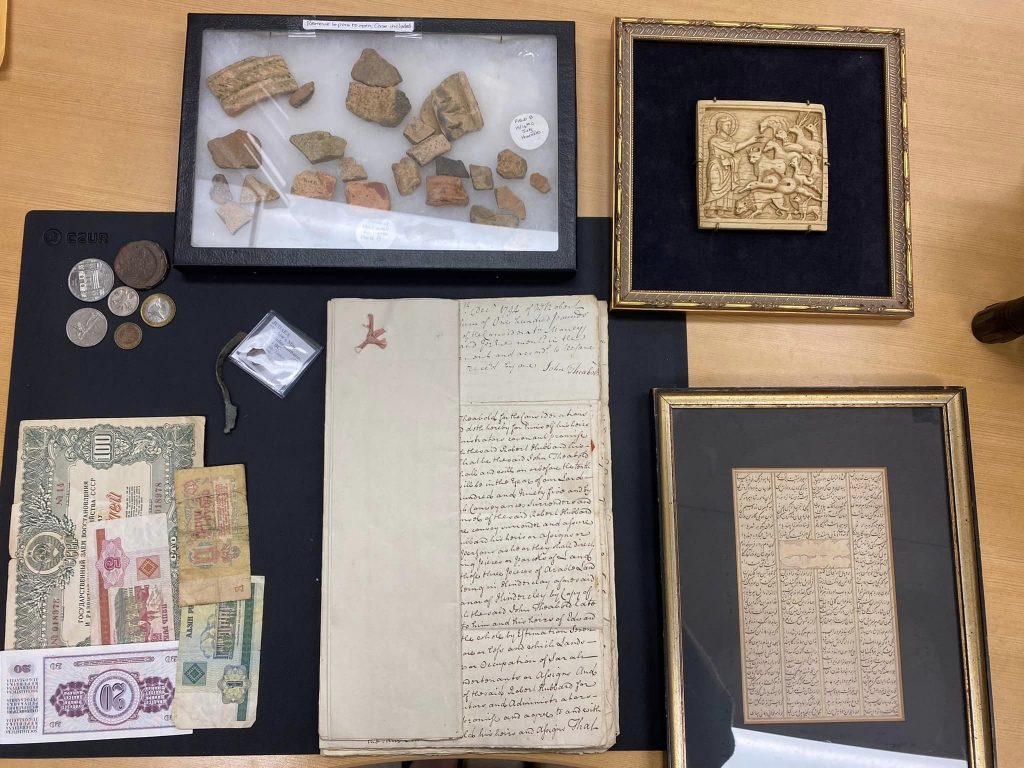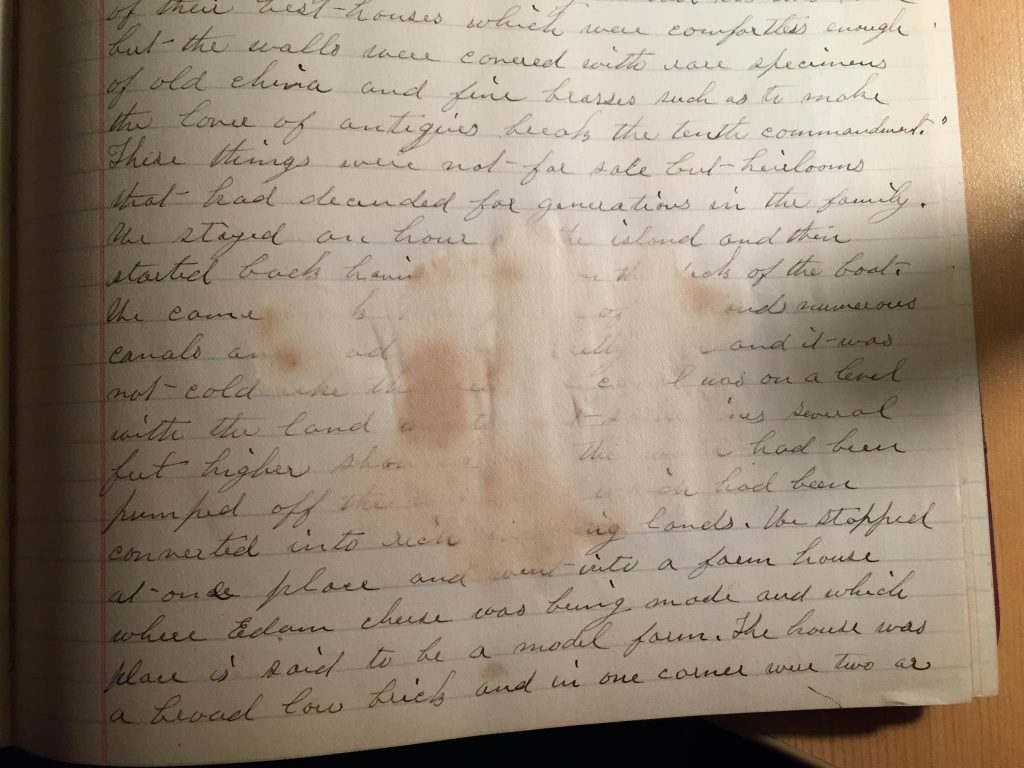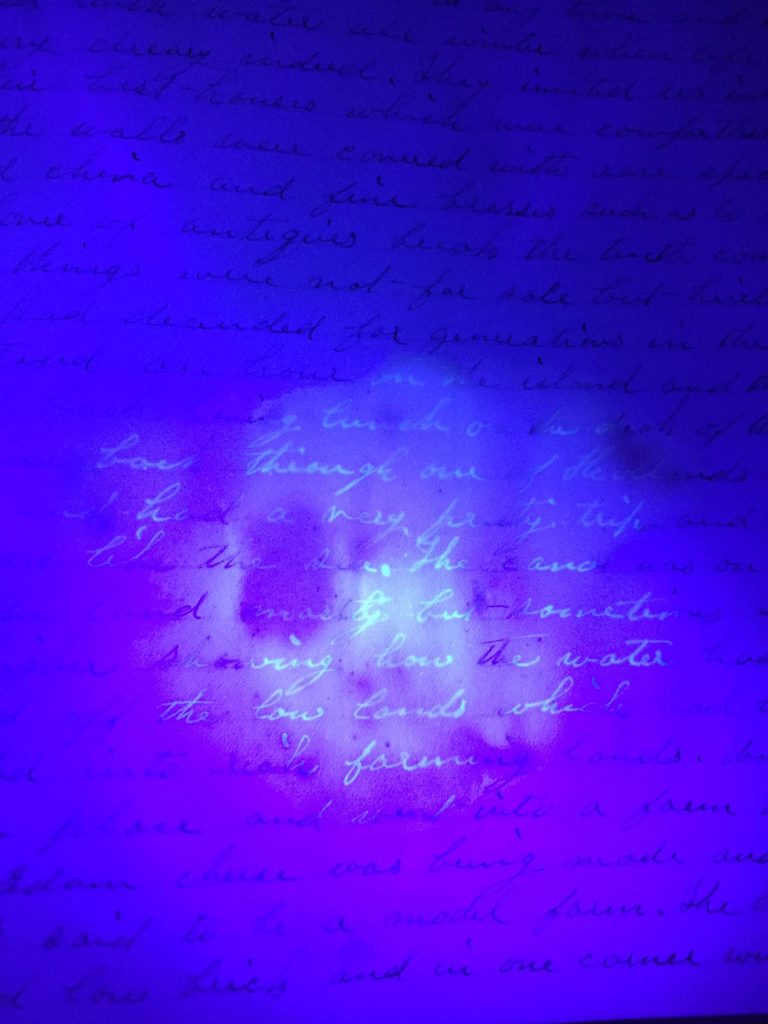Contributed by Margaret Smith, Southern Illinois University Edwardsville
- Course: Western/World Civ, Intro to Digital Humanities
- Level: High school or college
- Tool: None
- Other materials: Artifacts (These can be anything – historical artifacts are great, but you could do the same thing with contemporary objects and ask them to think about how future historians might interpret the object.)
I’ve used a variation on this assignment for several years in courses including world civ, introduction to digital humanities, and the transdisciplinary communication course in SIUE’s digital humanities gen ed pathway. I’ve adjusted it with each use, and the most recent iteration has produced some really strong student engagement from our freshmen, most of whom are not humanities majors.
In this iteration, I visited the CODE121 (Transdisciplinary Communication) course in our digital humanities gen ed pathway to give an introduction to digital humanities. After a brief lecture on digitization technologies, including photography, multispectral imaging, and 3D modeling, I broke the students into groups and gave each group a set of historical objects and asked them to consider our experience of the physical object itself, how digitization mediates that experience, and what is gained and lost by encountering digital surrogates versus material objects.

The answers were wide-ranging. For instance, how do you capture the smell of 18th-century paper, or the tactile experience of running your fingers over a Roman coin? Those things are lost in the process of digitization. On the other hand, multispectral imaging can recover the obliterated ink in a damaged journal, adding substantive information to what we can perceive with the naked eye.



In both history and digital humanities courses, this activity invites students to think critically about provenance and reception, about source survival and loss, and about the ways that technology shapes the work of the scholar.
Digitization-worksheet